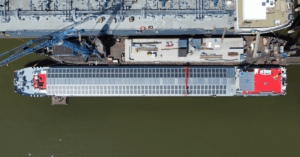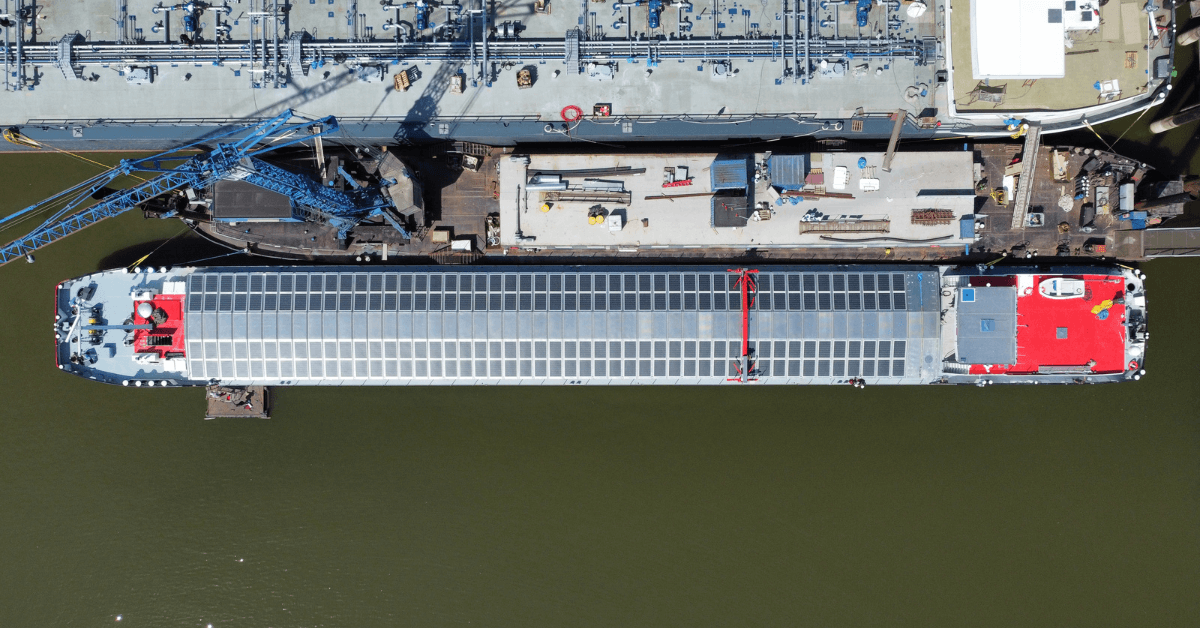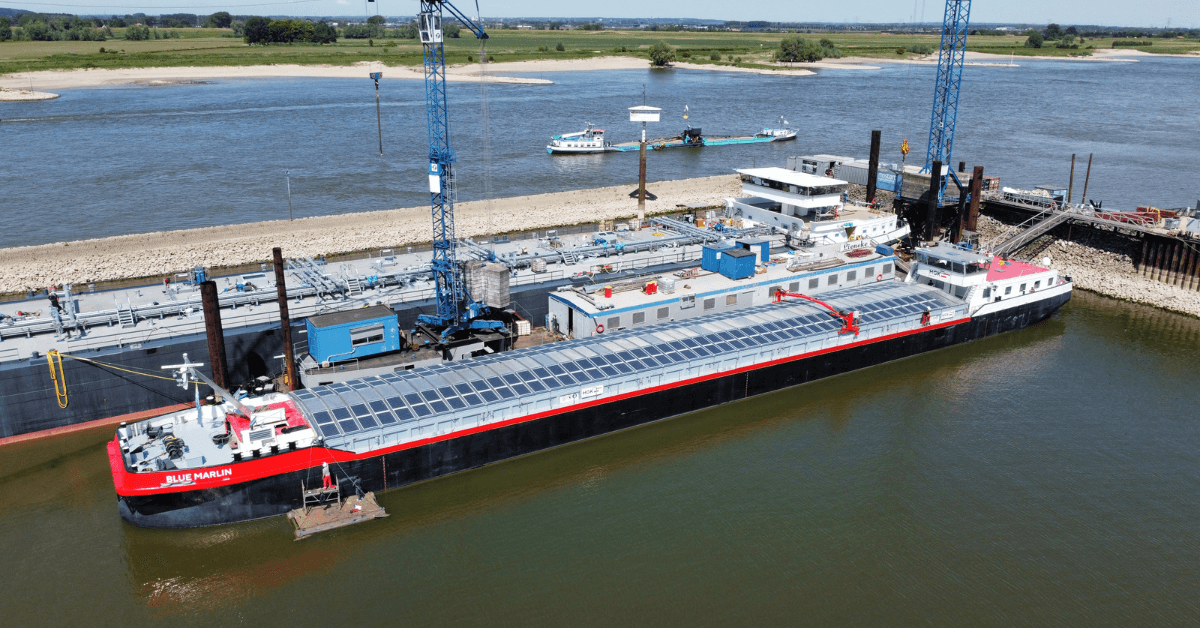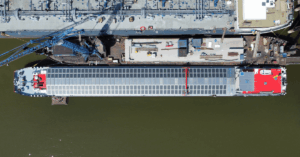
Houthis Attack Second Ship In 24 Hours, Crew Injured & 2 Missing
July 8, 2025
Tanker Explodes Off Indian Coast After Methanol Discharge, 21 Crew Rescued
July 8, 2025

Dutch solar technology company Wattlab and Germany’s HGK Shipping have unveiled the world’s first hybrid inland cargo vessel powered by solar energy.
The vessel, named Blue Marlin, is equipped with 192 solar panels that supply power to both the onboard systems and the vessel’s high-voltage propulsion system. This makes the Blue Marlin the first inland vessel in the world to use solar power directly for movement, not just for basic onboard functions.
HGK Shipping is a major player in European inland waterway shipping, operating a fleet of 350 vessels and transporting around 43 million tonnes of goods every year. The company specialises in the transport of dry bulk, gas, and chemicals across Europe.
Wattlab, known for its work in both inland and seagoing shipping, has been collaborating with HGK Shipping on solar energy projects. In the second quarter of 2024, another vessel from HGK Shipping, the MS Helios, gained attention and made it into the Guinness Book of Records for having the world’s largest solar panel system on an inland cargo vessel.
The MS Helios has 312 solar panels, but its system is limited to supplying low-voltage onboard or hotel systems.

The solar system on the Blue Marlin is more advanced. Unlike the Helios, the Blue Marlin’s solar power setup is fully integrated, meaning it supports both low-voltage systems (like lighting and equipment) and high-voltage systems used for propulsion.
Wattlab’s co-founder and COO, David Kester, described this as a major technical milestone for inland shipping. He said the vessel can now officially be considered the first of its kind to directly use solar energy for sailing.
Under optimal sunlight conditions, the system can deliver up to 35 kilowatts of power. It works alongside four diesel generators that also supply energy to the electric propulsion system. This combined setup allows for what’s known as peak shaving-a method where solar energy and batteries help reduce the need to turn on an extra generator during times of high energy demand.
The Blue Marlin also uses automated energy management, which controls and distributes power where it is needed most, increasing overall efficiency and helping save fuel.
According to Wattlab, when the ship is lightly loaded and sailing downstream, it might even run entirely on solar energy for short periods, a major achievement that has never been done before in inland shipping.
Reference: Wattlab
Source: Maritime Shipping News


